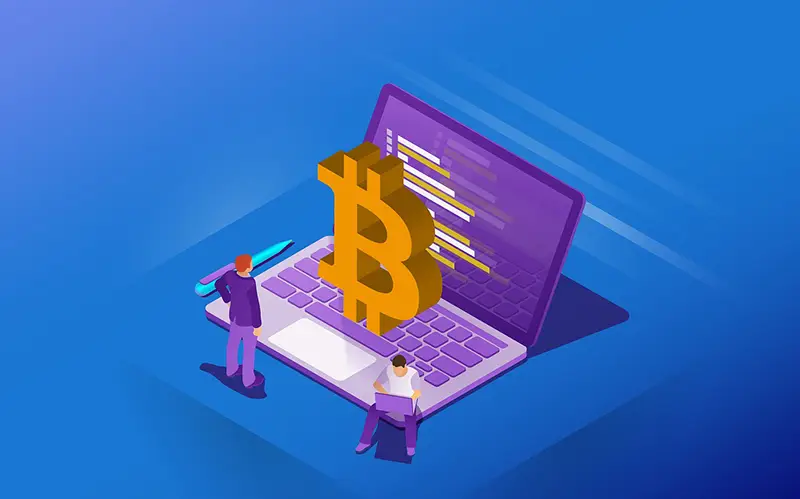Cryptocurrency arbitrage is a process in which a trader buys an asset on one exchange at a lower price and sells it on another platform at a higher price. This method allows you to profit from price differences without having to wait for the growth of the global market or the price of a specific cryptocurrency.
How does cryptocurrency arbitrage work? The basis for this is that currency rates on different exchanges can differ significantly due to different liquidity levels, reaction times, and technical factors. Let’s take a closer look.

How cryptocurrency arbitrage works: useful information for beginners
Suppose the price of BTC on Binance is 3,100,000 rubles and on Kraken it is 3,110,000 rubles. If you buy Bitcoin on the first platform and immediately sell it on the second, you will make a profit of 10,000 rubles per transaction, excluding commissions and transfer fees. Arbitrage performs an important function: it ensures equal interest rates on the market, thereby maintaining its stability and liquidity.
Its simplicity makes the method accessible even to beginners. To be successful in this industry, quick decision-making, in-depth market analysis, and the use of effective price monitoring tools are required.
Types of cryptocurrency arbitrage and how they work
The income-generating system has several variants, each of which differs in complexity and potential profitability:
- In exchange arbitrage, you buy cryptocurrencies on one platform and sell them on another. For example, buy ETH on the Huobi exchange for 200,000 rubles and sell it on Binance for 202,000 rubles. The trader earns money from the difference of 2,000 rubles. The speed at which such actions are performed plays a decisive role.
- Intra-exchange arbitrage is based on the price difference within an exchange, but between different trading pairs. For example, you can buy BTC for USDT, then exchange BTC for ETH, and finally sell ETH for USDT. You will then make a profit thanks to the changes in the price relationship between these pairs. This method is less risky, but requires careful analysis.
- Triple arbitrage involves three different assets and is usually performed automatically by bots. For example, by buying BTC for USD, exchanging BTC for ETH, and selling ETH for USD. If the transaction is executed quickly and skillfully, the trader will make a profit from the price difference.
- Spoofing arbitrage involves using algorithms and bots to automatically find arbitrage opportunities.
How to work with exchanges correctly
 Understanding how cryptocurrency arbitrage works is especially important for beginners who are just getting started in the world of cryptocurrency trading.
Understanding how cryptocurrency arbitrage works is especially important for beginners who are just getting started in the world of cryptocurrency trading.
What everyone should learn:
- Select reliable exchanges to trade with. Popular platforms such as Binance, Kraken, and Huobi have high liquidity and user-friendly interfaces. Beginner traders should create accounts on multiple exchanges and go through the verification process to quickly gain access to trading.
- Real-time monitoring of cryptocurrency prices. With the help of arbitrage calculators and specialised bots, you can automatically track price differences between exchanges. For example, the services of CoinMarketCap or CoinGecko can help you quickly identify promising opportunities.
- Make a trade. Buying an asset on one platform and quickly selling it on another minimises the delay. It is important to consider the fees for depositing and withdrawing funds so that you do not miss out on profits.
- Withdrawal of received profits. Beginner traders should learn how to optimise their trading time and costs to maximize their profitability.
Beginners often make the mistake of trading slowly or ignoring fees. By practicing with small amounts, you minimize the risks and gain valuable experience.
Risks of cryptocurrency arbitrage
Although there is potential to make money from exchange rate fluctuations, this method also carries certain risks. A successful trader must consider the following to minimize losses and protect their investments:
- High volatility of the crypto market. Prices can change within seconds and by the time the transaction is completed, the price difference can disappear. For example, if you buy BTC on one platform for RUB 3,100,000 and then try to sell it on another platform for RUB 3,110,000, you may not make a profit if the price drops during the transaction.
- Withdrawal and deposit fees also reduce the profitability of arbitrage. Exchanges charge fees for each transaction and blockchain networks charge fees to confirm transactions. By carefully calculating all costs, you can avoid losses and determine how profitable the transaction will be.
- Another major risk is transaction delays. Transfers between exchanges can take from a few minutes to several hours, depending on the traffic on the network. During this time, the price can change, reducing the potential profit to zero.
- Risk of account blocking. Some platforms can freeze funds if they suspect fraudulent activity or if verification requirements are not met.
- In addition, there is a risk of technical failures on the venues. Exchanges can temporarily suspend their operations to update their systems or due to DDoS attacks. As a result, the transaction may not be completed and no profit can be made.
Is it possible to make money with cryptocurrency arbitrage in 2024 and how?
Technology is evolving and the coin market is becoming increasingly competitive. However, there are still opportunities for arbitrage in cryptocurrencies, which raises the question of how the system works today.
In 2024, algorithmic arbitrage will gain popularity. By using specialized bots and algorithms, transactions can be executed within a fraction of a second. This minimizes the risks due to volatility. With tools such as Gekko or 3Commas, you can automate the process and achieve a stable profit.
The rise of crypto exchanges and trading platforms creates new arbitrage opportunities. For example, regional platforms often have different rates due to differences in supply and demand in the local market.
Institutional investors are also entering the market, increasing liquidity and stabilizing prices. However, the method remains accessible to private traders who want to react quickly to changes and use effective tools.

Conclusion
 How cryptocurrency arbitrage works is a question that concerns both novice and professional traders. The system offers the opportunity to profit from the exchange rate differences between exchanges by using technological solutions and fast action. Successful arbitrage requires in-depth knowledge of the market, as well as the ability to react quickly to changes and the ability to take into account costs and risks.
How cryptocurrency arbitrage works is a question that concerns both novice and professional traders. The system offers the opportunity to profit from the exchange rate differences between exchanges by using technological solutions and fast action. Successful arbitrage requires in-depth knowledge of the market, as well as the ability to react quickly to changes and the ability to take into account costs and risks.
 en
en  ru
ru  de
de  ar
ar  es
es  nl
nl  hi
hi  fr
fr  it
it  pt
pt  el
el 










